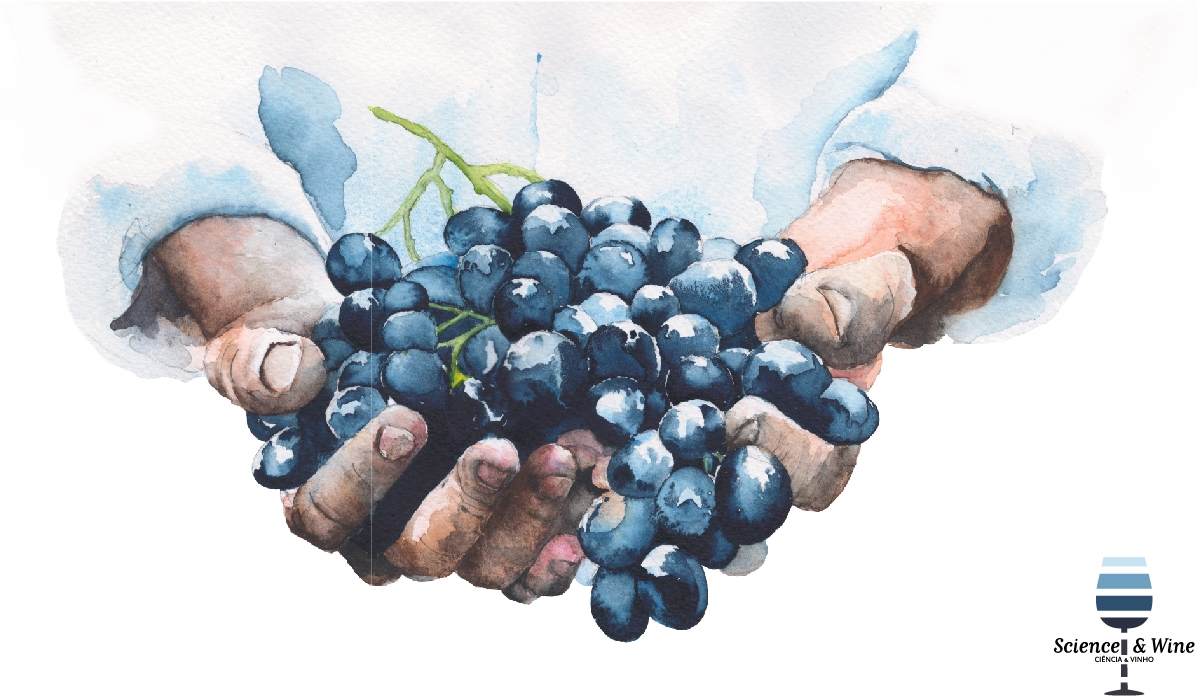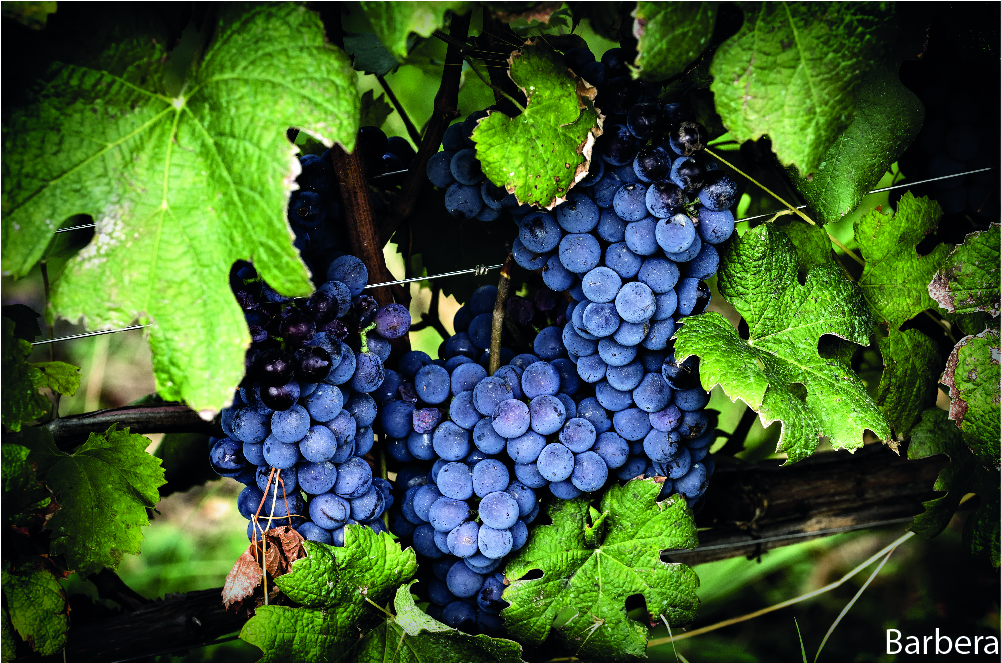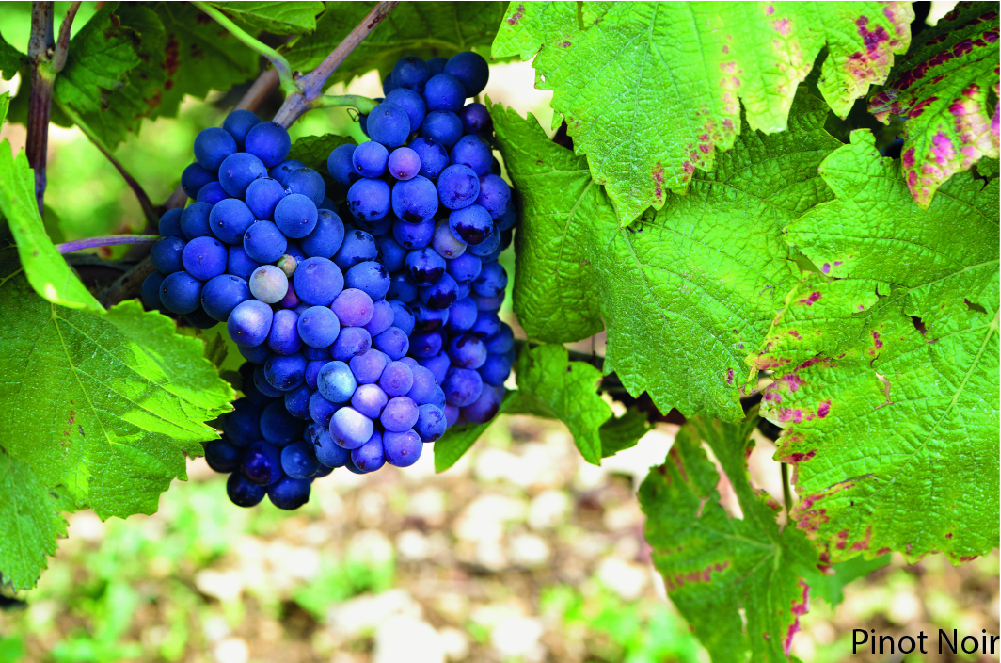By Maurizio Petrozziello, Andriani Asproudi and Alessandra Ferrandino
The constant increase of summer month temperatures over the last decade has led to significant changes in the chemical composition of grapes at harvest. Many authors have reported a greater and more rapid accumulation of sugars in grapes, and an advance of the phenological phases of flowering and veraison that implies a lack of synchrony among technological, phenolic and aromatic maturity. Considering this evidence early harvesting has gained renewed interest, particularly in the warmer areas of global viticulture. The changes in grape chemical composition that occur close to harvest are crucial for the final quality of the wine and many aspects of the aromatic personality of the grapes are defined in this stage of maturation.
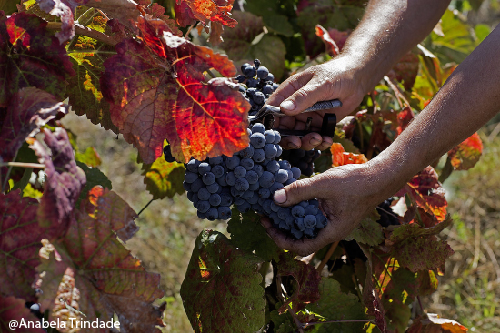
Carotenoids play a crucial role in plants contributing to the photosynthetic process by ensuring the complete uptake of light radiation and protecting chlorophyll from photo-oxidation. Their concentration in grapes depends on several factors namely variety, ripening stage, environmental conditions, including the seasonal meteorological trend, cluster exposure to light, water availability and cultural practices. Some factors facilitate carotenoid synthesis in the herbaceous phase of the berry, while others favour their degradation after veraison and during the final stages of maturation. From an oenological point of view, carotenoids are important precursors of some aromatic compounds known as norisoprenoids that, in turn, play an important role, particularly in wines produced with non-aromatic grapes. Thus, the identification of suitable cultural techniques that may favour both carotenoid synthesis and degradation, as well as the choice of harvest time, appear to be crucial for the quality of future wine.
Norisoprenoids (specifically 13 carbon skeleton compounds) are important contributors to wine aroma due to their very low olfactory thresholds (in water at the ppt level) and pleasant floral and fruity notes, even when present in small quantities. Recent studies show that they can also indirectly contribute to the wine bouquet, acting as enhancers of fruity notes, especially in the case of young wines. Two norisoprenoids are considered key aromas in wine: -ionone and -damascenone. The former is generated directly from both enzymatic and photo-oxidative degradation of β-carotene and contributes a violet-like note to neutral wines. It accumulates in grapes until harvest but its concentration in wines tends to decrease rapidly. The latter confers soft and pleasant notes of rose and quince, and derives from the degradation of neoxanthine via enzymatic and acid-catalysed transformations. The complex pathway and numerous precursors generated explain why -damascenone is generally present in trace amounts in ripe grapes, but it can reach significant concentrations in musts and young wines during their storage.
During a research study carried out in 2015, Barbera and Pinot Noir berries were harvested 7 and 15 days before standard harvest. In contrast to previous research, this study highlighted that during the last stages of ripening, as the berry carotenoid content decreased, a corresponding increase in β-damascenone in wines was not noticed. Moreover, for both Pinot Noir and Barbera, a positive correlation between the total acidity levels of musts and β-damascenone content was highlighted, and the concentration of β-damascenone was higher in wines obtained from early-harvested grapes. In Barbera, a reduction of the alcohol content in the finished wines (grapes harvested 7 days before standard harvest) by approximately 2 degrees corresponded to an increase of β-damascenone concentration in wines of approximately 15%. Thus, for certain varieties, harvesting grapes slightly earlier can have a positive impact on the overall aroma of the produced wine, as early harvesting leads to a reduced alcohol content and is associated with the greater presence of an important aromatic molecule, which is able to enhance the fruity aroma of wines without any effect on the anthocyanin concentration and profile, and thus on wine colour.
Studying the varietal aromatic profile of a cultivar during the last stages of maturation allows the detection of the optimum aromatic potential of grapes and to understand the relationships among the various classes of compounds, finalizing the choice of time of harvest based on the desired wine type. In light of the above results, it is clear that certain events linking the development of the berry, and the aromatic and technological maturity to the aroma of the final wines are yet to be elucidated. Therefore, the objective of relating grape composition to the aromatic profile of finished wines, especially in the context of climate change, remains a difficult question to approach and highlights the need for further knowledge in this field.
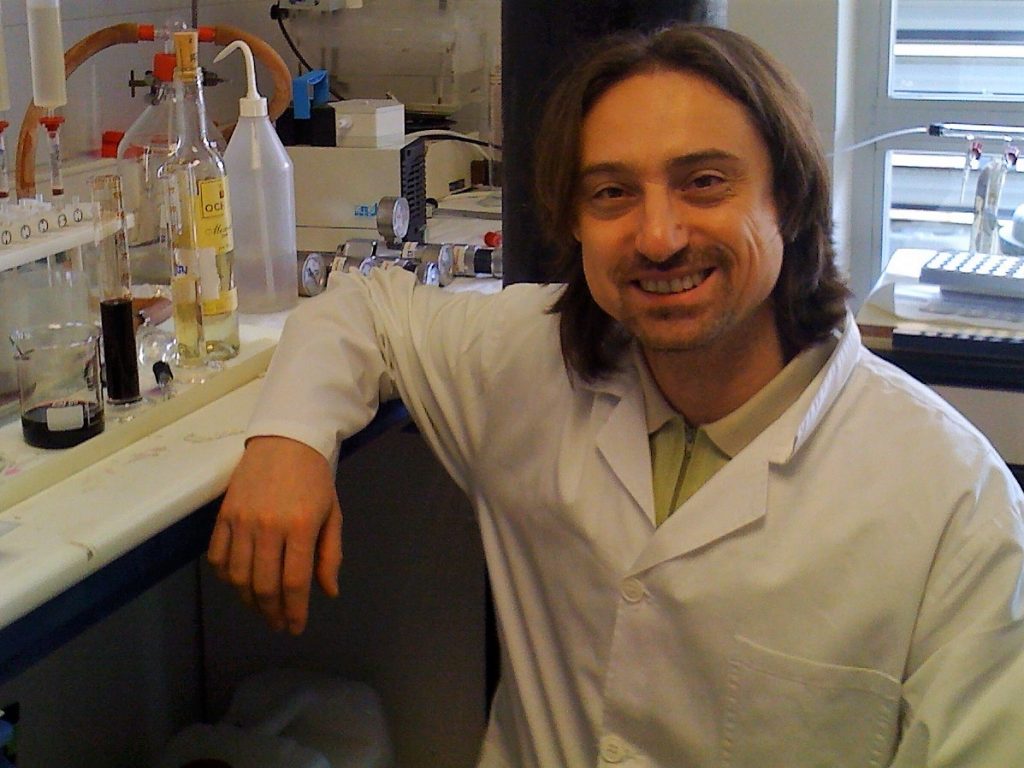
Maurizio Petrozziello
Post-graduate degree in Viticulture and Enology and PhD in Agriculture, Forestry and Food Sciences. Currently he is working as researcher at the Research Centre for Viticulture and Enology of Asti (CREA-VE, Italy). Specialist in GC-MS and GC-O techniques aimed to the analysis of wine odorants. His main interest is aromatic composition of wines and grapes with special attention to winemaking impact on the wine bouquet.

Andriani Asproudi
Graduate degree in Agriculture (Aristotle University of Thessaloniki –Greece), post-graduate degree in Viticulture and Enology and PhD in Agriculture, Forestry and Food Sciences (University of Turin –Italy). Currently she is working as research assistant at the Research Centre for Viticulture and Enology of Asti (CREA-VE, Italy). Her main areas of research are method development and HPLC, GC-MS, GC-O analysis aimed to the characterization of the phenolic, carotenoid and aromatic composition of grapes and wines. Recent research works are focused on the study of the impact of vineyard microclimate and climate change on the evolution of aroma precursors of the grapes and wine key aromas.

Alessandra Ferrandino
(ORCID ID: orcid/org0000-0002-1567-5874)
Born in Turin, 18/10/1968, maiden, two sons.
Her research activity in viticulture and grapevine biology focused on the influences exerted by environment, genotype and their interaction on secondary metabolite accumulation (polyphenols and volatiles). Abiotic and biotic stressors induce grapevine responses able to modify plant hormonal metabolism with consequences on vine morphology, physiology and, finally, concentrations and profiles of secondary metabolites involved in the definition of berry quality. These aspects are the base for understanding the relations existing among grapevine/soil/climate that are responsible for many important practical aspects such as viticulture landscape, wine quality, nutraceutical benefits of grape and derived-product consumption. Moreover, secondary metabolite accumulation in berries and vegetative organs can contribute to explain grapevine susceptibility to pathogens, in the frame of offering new insights to the concept of sustainability in viticulture.
In 2012 she obtained the qualification as Associate professor (ASN, bando 2012, DD n. 222/2012; Sector, 07/B2, Scienze e Tecnologie dei sistemi arborei e forestali; SSD AGR/03, Arboricoltura generale e coltivazioni arboree – Fruit tree cultivation).
She is author/co-author of more than 100 technical/scientific papers; 33 are indexed on Scopus and ISI Web of Science (Scopus: h index = 13; 781 total citations).
She has developed scientific collaborations with IPSP – CNR (Turin, Italy); CREA (Asti, Italy); Istituto Fisica Applicata Nello Carrara – CNR (Firenze, Italy); Institut Agricole Régional (IAR, Aosta, Italy); Technical University of Munich (Biotechnology of Natural Products and Fruit Science, Freising, Germany); University of Castilla-La Mancha, Catédra de Química Agricola Albacete, Spain; ICVV Instituto Ciencia Vid y Vino, Llogrono, Spain.
She is reviewer of international Journals such as Journal Agriculture and Food Chemistry, Food Chemistry, Food Research International, Sensors, HortScience, OenoOne, Phytochemistry, to cite a few.
She held educational activities: Fruit and Grapevine cropping systems – Orchard management for fruit quality (Viticulture); Master in Agricultural Science (academic years 2013-14; 2014-15; 2015-16; 2016-17; 2017-18).
Secondary metabolites in grapevine. Inter-university Master in Viticulture and Enology Sciences (academic years 2014-15; 2015-16; 2016-17; 2017-18).
Interdisciplinary activities; Degree in Viticulture and Enology (2015-16).
PAS and TFA courses for teacher qualification in 2013-14 and 2014-15, respectively.
She was supervisor/co-supervisor of Master Degree Thesis and co-tutor of PhD students at DISAFA, Turin University. She took part in activities related to Incoming Student Guidance; she is deputed to manage Incoming and Outcoming Students from and to Bordeaux and Montpellier.
Those interested in a longer length report can download the working paper at:
https://pubs.acs.org/doi/abs/10.1021/acs.jafc.8b03418
References:
- Asproudi A., Petrozziello M., Cavalletto S., Guidoni S. (2016). Grape aroma precursors in cv. Nebbiolo as affected by vine microclimate. Food Chemistry, 211:947-956. https://doi.org/10.1016/j.foodchem.2016.05.070
- Baumes, R., Wirth, J., Bureau, S., Gunata, Y., & Razungles, A. (2002). Biogeneration of C 13-norisoprenoid compounds: experiments supportive for an apo-carotenoid pathway in grapevines. Analytica Chimica Acta, 458(1), 3-14. https://doi.org/10.1016/S0003-2670(01)01589-6
- Bindon K.A., Dry P.R., Loveys B.R. (2007). Influence of plant water status on the production of C13-norisoprenoid precursors in Vitis vinifera L. cv. Cabernet Sauvignon grape berries. J Agric Food Chem, 55: 4493-4500. https://doi.org/10.1021/jf063331p
- Lee S.H., Seo M.J., Cotta M.J.P., Block D.E., Dokoozlian N.K., Ebeler S.E., (2007). Vine Microclimate and Norisoprenoid Concentration in Cabernet Sauvignon Grapes and Wines. Am. J. Enol. Vitic., 58, 291-301
- Longo, R., Blackman, J. W., Antalick, G., Torley, P. J., Rogiers, S. Y., & Schmidtke, L. M. (2017). Harvesting and blending options for lower alcohol wines: a sensory and chemical investigation. Journal of the Science of Food and Agriculture. https://doi.org/10.1002/jsfa.8434
- Oliveira C., Csar Ferreira A., Costa P., Guerra J., Guedes de Pinho P., 2004. Effect of Some Viticultural Parameters on the Grape Carotenoid Profile. J Agric Food Chem, 52 (13): 4178-4184. https://doi.org/10.1021/jf0498766
- Palomo, E. S., Díaz-Maroto, M. C., Viñas, M. G., Soriano-Pérez, A., & Pérez-Coello, M. S. (2007). Aroma profile of wines from Albillo and Muscat grape varieties at different stages of ripening. Food control, 18(5), 398-403. https://doi.org/10.1016/j.foodcont.2005.11.006
- Pineau, B., Barbe, J.-C., Van Leeuwen, C., & Dubourdieu, D. (2007). Which Impact for β-Damascenone on Red Wines Aroma? Journal of Agricultural and Food Chemistry, 55(10), 4103–4108. https://doi.org/10.1021/jf070120r
- Young, P. R., Lashbrooke, J. G., Alexandersson, E., Jacobson, D., Moser, C., Velasco, R., & Vivier, M. A. (2012). The genes and enzymes of the carotenoid metabolic pathway in Vitis vinifera L. BMC Genomics, 13(1), 243. https://doi.org/10.1186/1471-2164-13-243

